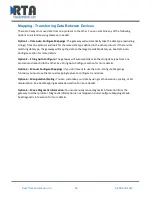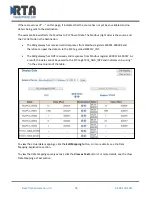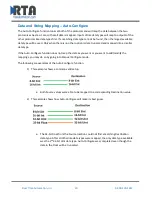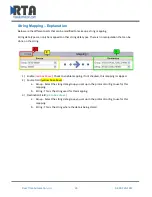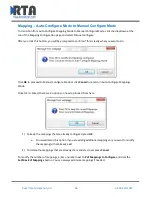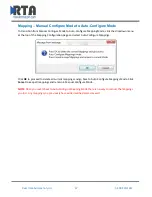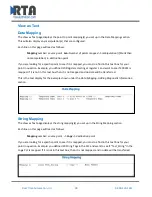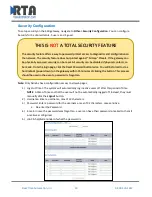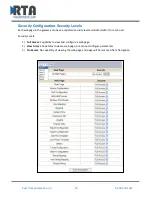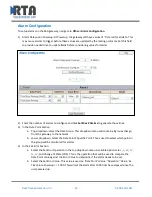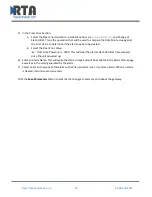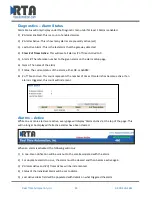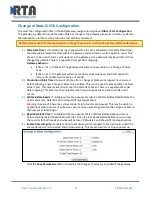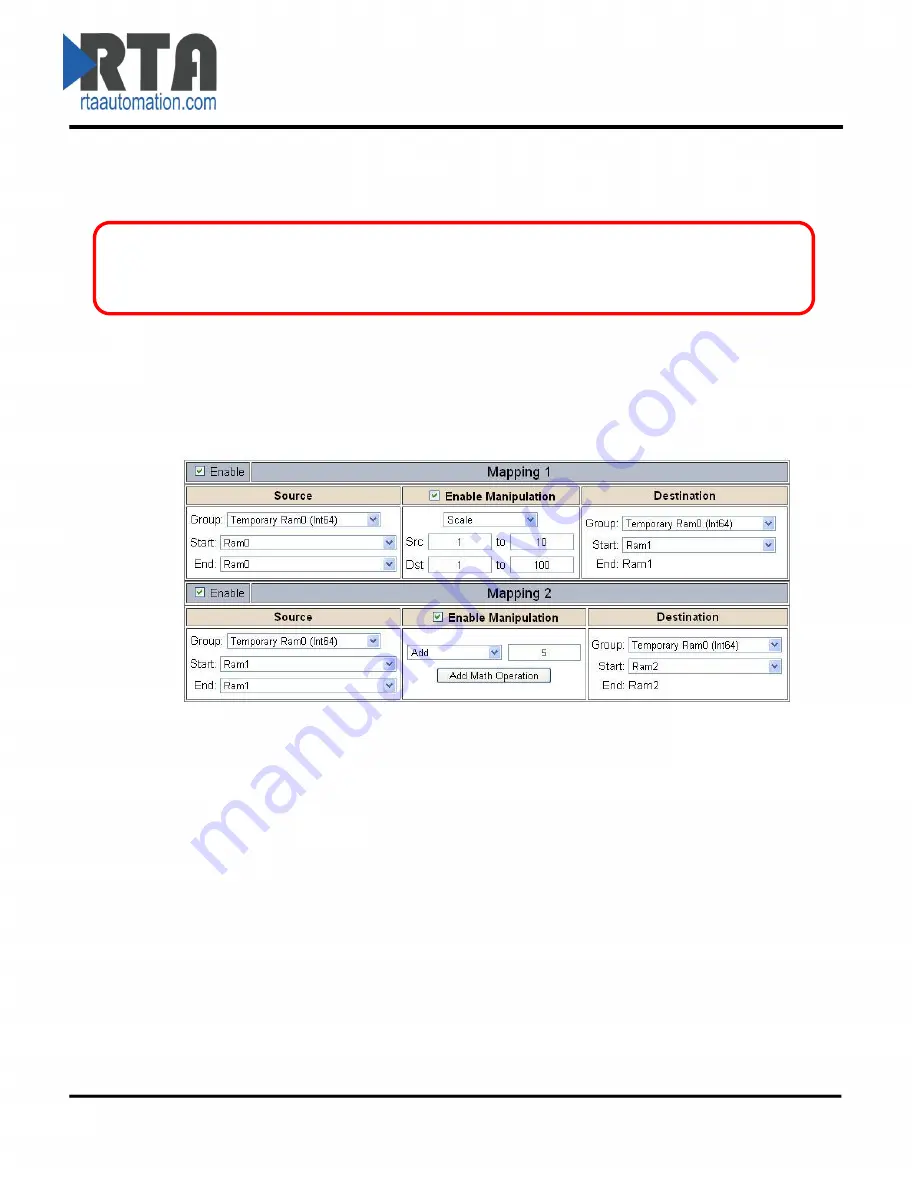
Real Time Automation, Inc.
32
1-800-249-1612
Data Mapping
– Adding Diagnostic Information
Data Mapping offers 5 different types of information in addition to any scan lines specified for each
protocol.
1)
Temporary Ram (Int 64)
a.
This offers five levels of 64bit Integer space to assist in multiple stages of math
operations. For example, you may wish to scale and then add 5. You can set up a single
translation to scale with the destination as the temporary ram. Then another translation
to add 5 with the source as the temporary ram.
b.
The gateway will automatically convert the Source to fit the Destination, so there is no
need for Int 8, 16, 32 since the 64 may be used for any case.
In this example, Ram0 is scaled into Ram1. Ram1 is then increased by 5 and stored into Ram2.
Ram0 and Ram2 could be considered a source or destination group.
2)
Temporary Ram (Double)
a.
This is similar to the Temporary Ram (Int 64), except manipulations will be conducted
against the 64bit floating point to allow for large data.
3)
Ticks Per Second
a.
The gateway operates at 200 ticks per second. This equates to one tick every 5ms. Thus,
mapping this to a destination will give easy confirmation of data flow without involving
one of the two protocols.
4)
XY_NetBmpStat
a.
If a protocol is a Client/Master, there is a Network Bitmap Status that is provided. Since
a Client/Master may be trying to communicate with multiple devices on the network, it
may be beneficial to know if a Server/Slave device is down. By using this Network
Bitmap Status you can expose the connection statuses of individual devices.
b.
0x00000002 shows that only device 2 is connected
c.
0x00000003 shows that only devices 1 and 2 are connected
d.
0x00000004 shows that only device 3 is connected
IMPORTANT NOTE:
Only add Diagnostic Information
AFTER
both sides of the gateway have been
configured. If changes to either protocol are made after diagnostic information has been added to the
mapping table, it is necessary to verify all mappings. Remapping may be necessary.









